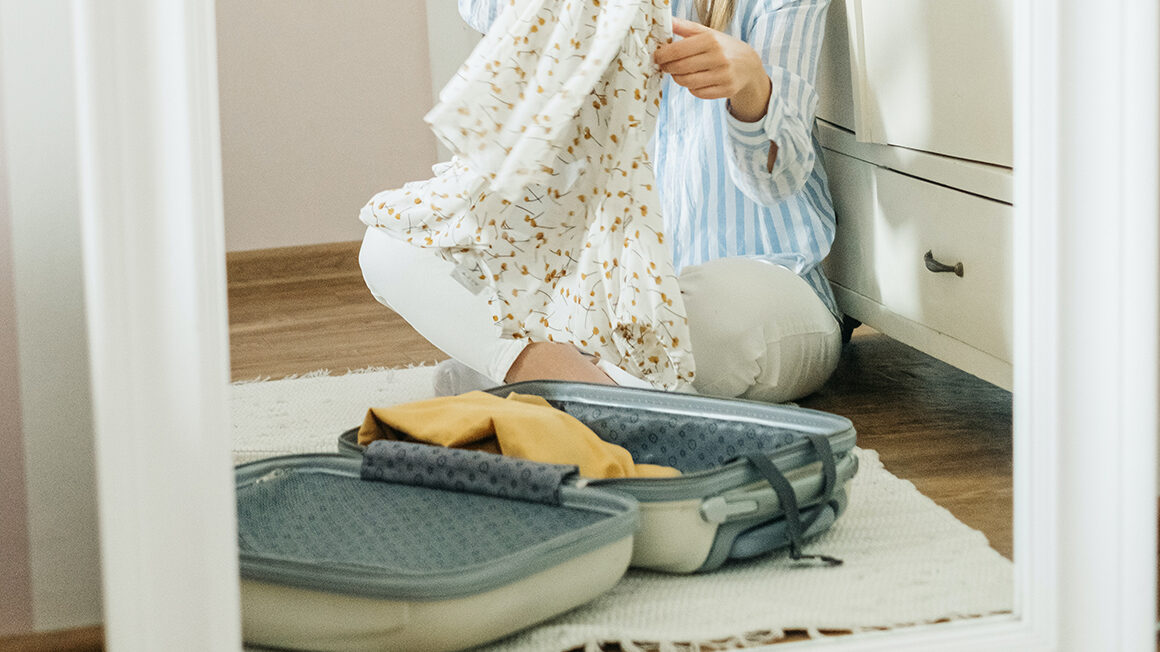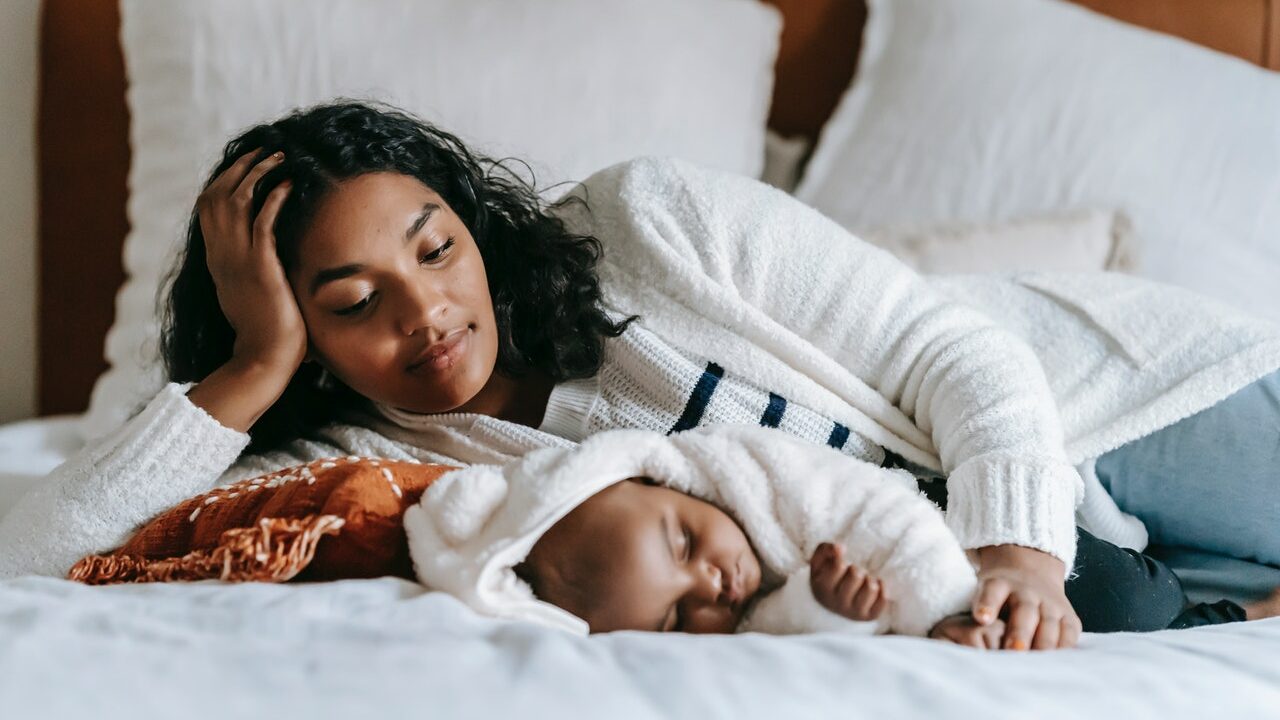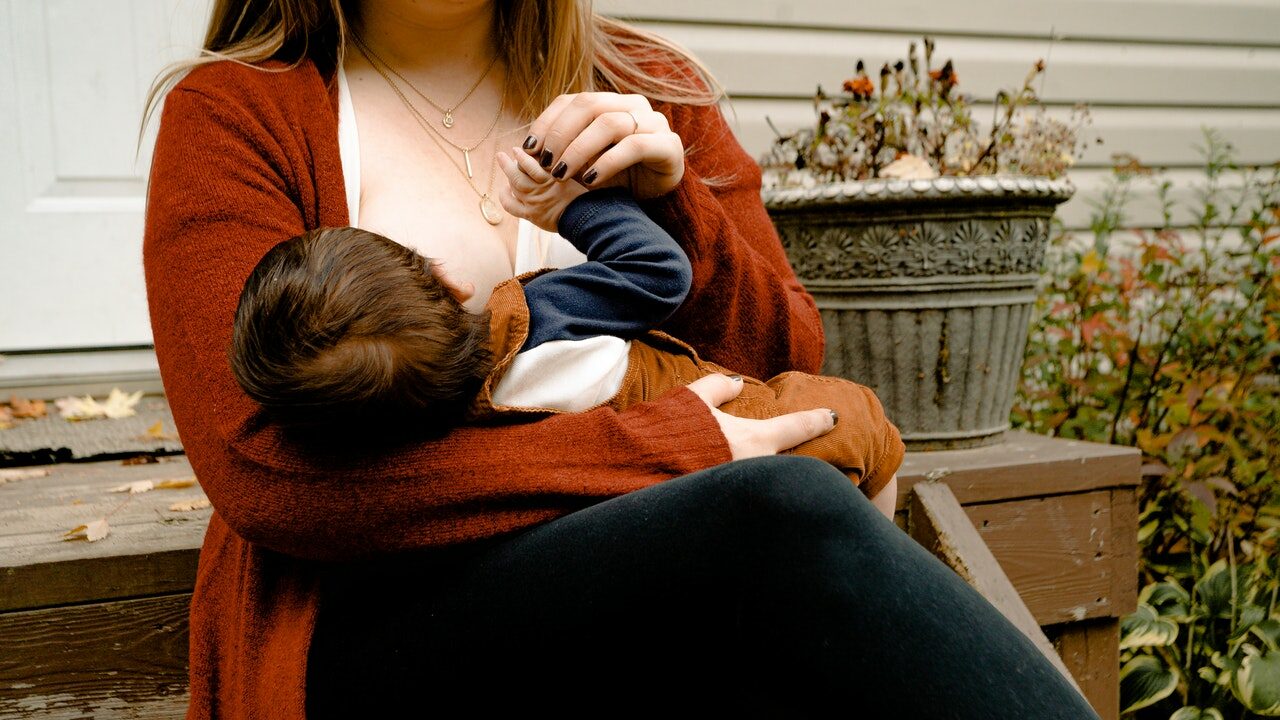For the majority of woman, the 9 months of pregnancy are period-free. The menstrual cycle doesn’t kick in again immediately after childbirth either so menstrual products are off the shopping list for the best part of a year. But at some point, periods will return and you will have the same options of pads and tampons as you did pre-pregnancy. If you are working towards a zero-waste life or want to buy non-toxic products, a menstrual cup is worth serious consideration. Whether you are new to the menstrual cup, or it was your pre-baby go-to, the thought of using one postpartum could have you asking questions. Questions such as do I need a different size cup, can I use the cup straight after childbirth and should I use different menstrual cup folds?
Page Contents
- 1 What exactly is a menstrual cup?
- 2 Why do women choose menstrual cups?
- 3 Can I use a menstrual cup for postpartum bleeding?
- 4 How long after childbirth should I wait before using a menstrual cup?
- 5 Do I need a different size of menstrual cup postpartum?
- 6 Using a menstrual cup postpartum
- 7 Different menstrual cup folds
- 8 Making the best decision for you
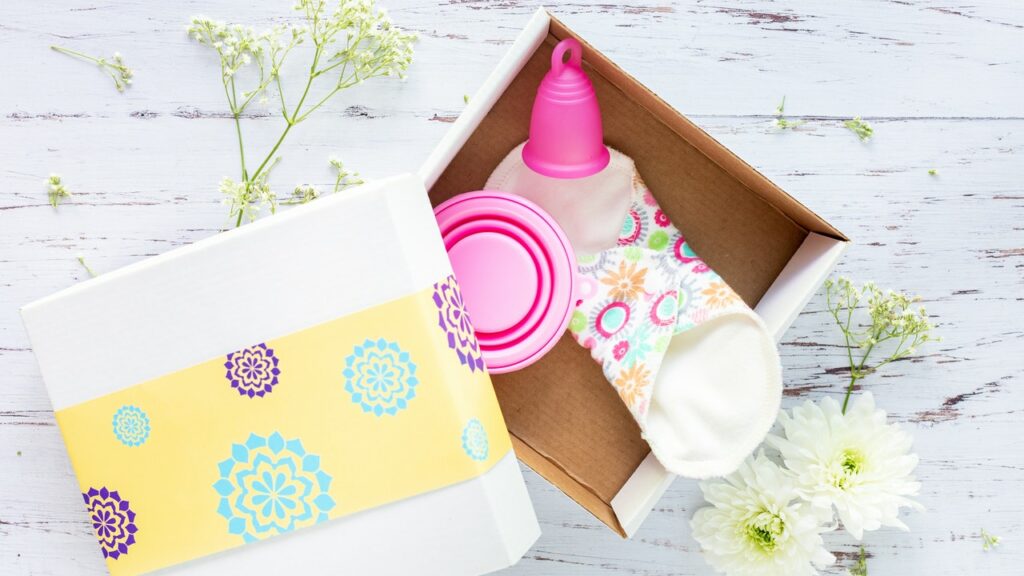
What exactly is a menstrual cup?
A menstrual cup is a cone-shaped container that sits in the vagina where it collects menstrual blood during a period. Made from a flexible and hygienic material, there are 2 different sizes available. The cup is removed every 6 to 8 hours and washed before re-inserting. This means there is no waste – just one cup per person is all that’s needed.
Why do women choose menstrual cups?
There are several benefits to choosing a menstrual cup as your preferred hygiene product.
1. Menstrual cups are planet friendly. On average, a woman uses around 260 sanitary products each year. That’s a lot of product being manufactured and then thrown away after just a few hours of use. With a menstrual cup, you only need one because it’s reusable.
2. In most disposable sanitary products there is some plastic. This plastic gets thrown into landfill or flushed into the sewage system where it doesn’t degrade for 400 years!.
3. The packaging usually contains plastic too, and each product is individually wrapped, so that’s 260 pieces of packaging that are added to the waste pile as well.
4. Tampons and pads contain toxic chemicals which you put inside or next to your body – cups don’t contain these harmful chemicals.
5. You save money. Although a cup seems expensive to buy initially, there is nothing more to pay for the following months.
6. Menstrual cups need changing less often than a tampon. A cup can stay in place for 6, 8 even 10 hours.
7. The absorbency of tampons can cause vaginal dryness, but this won’t happen with a cup.
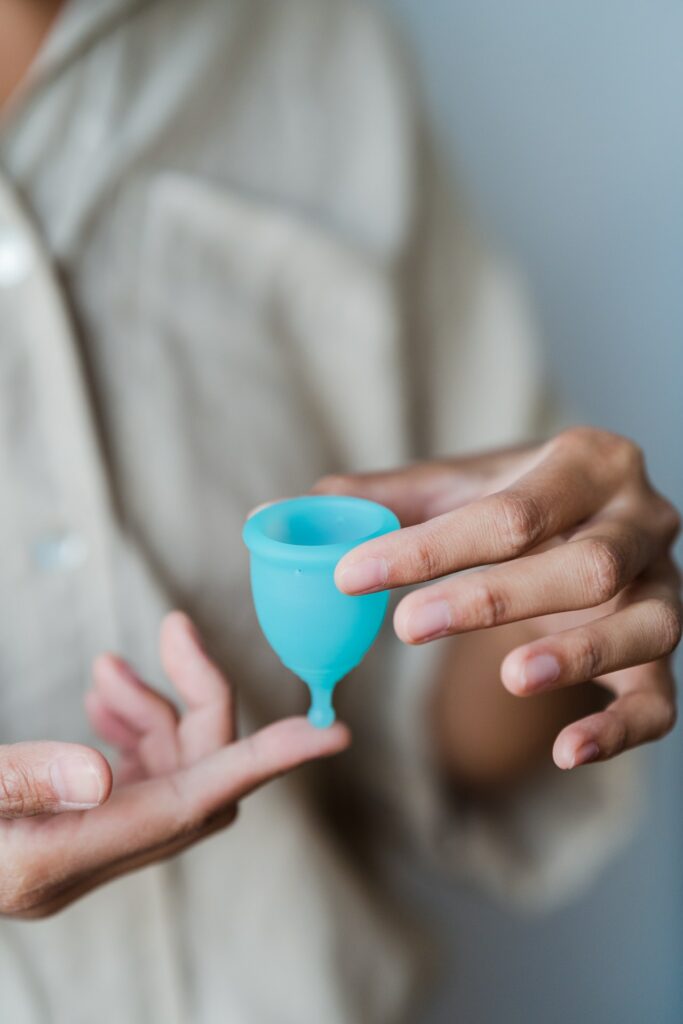
Can I use a menstrual cup for postpartum bleeding?
You can’t use a cup for the bleeding associated with childbirth. This bleeding is a mixture of blood, tissue and mucus from the uterus where the placenta was attached during pregnancy. It’s not the same as menstrual blood. Your delicate insides will be swollen and sore after delivery – you need time to heal internally and the cervix must be fully closed before anything is inserted. This healing all takes time and everyone repairs differently.
How long after childbirth should I wait before using a menstrual cup?
It’s best to wait at least 6 weeks after childbirth before inserting a menstrual cup into your body. Normally, you will have a check-up at this sort of time, so ask your medical advisor if you can start using a menstrual cup.
Periods don’t always return quickly, so you might not need any sanitary products for a while. The earliest you will see your menstrual cycle return is around 5 or 6 weeks after birth. If you breastfeed, it is often much later than this as estrogen levels are suppressed delaying the restart of periods.
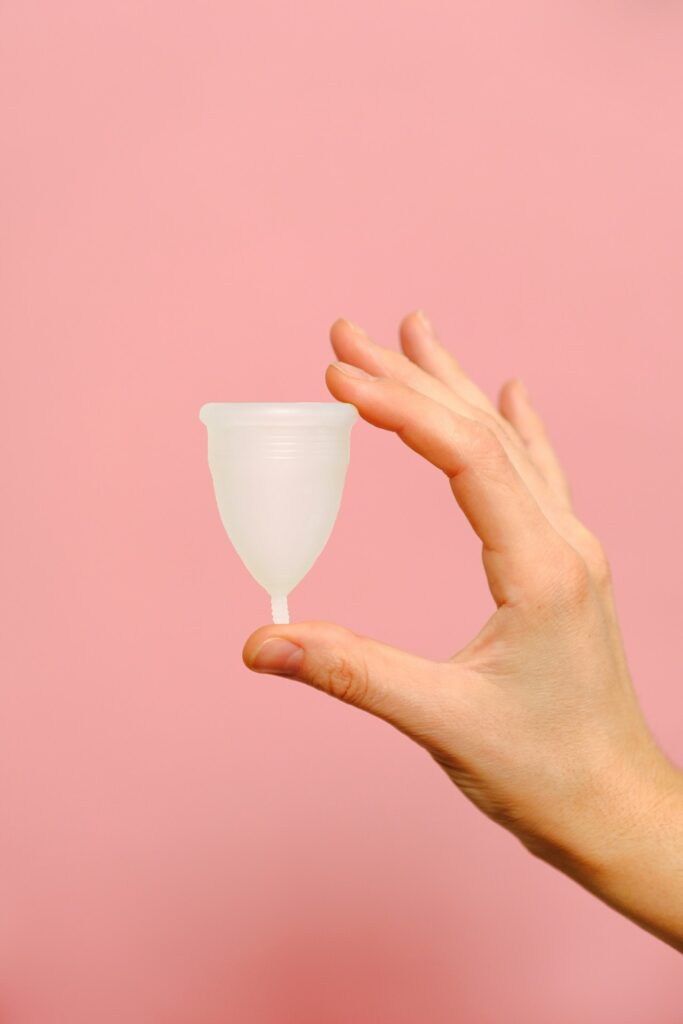
Do I need a different size of menstrual cup postpartum?
Menstrual cups are made in 2 different sizes. Although it is suggested that women who have delivered a baby vaginally need the larger size, this is just a guide. If you used the smaller cup before, you don’t automatically need to change to the other size. The best thing to do is try the one you already own before purchasing a new one.
Using a menstrual cup postpartum
Once you have been given the green light to use a menstrual cup postpartum, there is little difference to using one pre-pregnancy. It might be a little tricky the first time back, but that’s the same with tampons too. It just takes a little practice.
The most important thing to remember is to relax. Give yourself time and space. Your body will have changed so there are new things to get used to. If you cannot insert the cup easily then try to alter your approach. Position your body differently – you can squat, lift one leg or perch on the edge of the toilet seat. Although one way might have worked well pre-pregnancy, something a little different might be better postpartum.
Different menstrual cup folds
When you prepare the menstrual cup for insertion, you need to fold it. That’s because it’s a flexible item, and folding it creates the right shape and rigidity to get it into position.
The 4 most common menstrual cup folds just take a second to do:
– The C Fold is the easiest – just fold the cup in half lengthways, then fold it lengthways again. The lips of the cup should now look like the letter C.
– The 7 Fold makes the cup narrower at the top. This makes it easier to insert and is favored by younger women. Start by folding the cup in half lengthways, and then take the right corner and fold it down to the center creating a triangle shape. You should see a ‘7’.
– The Punchdown Fold is the least fiddly. Hold the cup at the base in one hand, and with the other hand push one side down inside itself. It sort of scrunches it down.
– The Tampon Roll effectively makes a sausage shape. Fold the cup in half lengthways then roll it lengthways. You might need a surface to do this on, but with a bit of practice, you will do it in no time
Everyone finds their own way of inserting their menstrual cup. What works for one might not work for another. The best piece of advice is to follow is don’t panic. You might not get it the first time, but try again. Have a go at the different menstrual cup folds until you find your favorite.
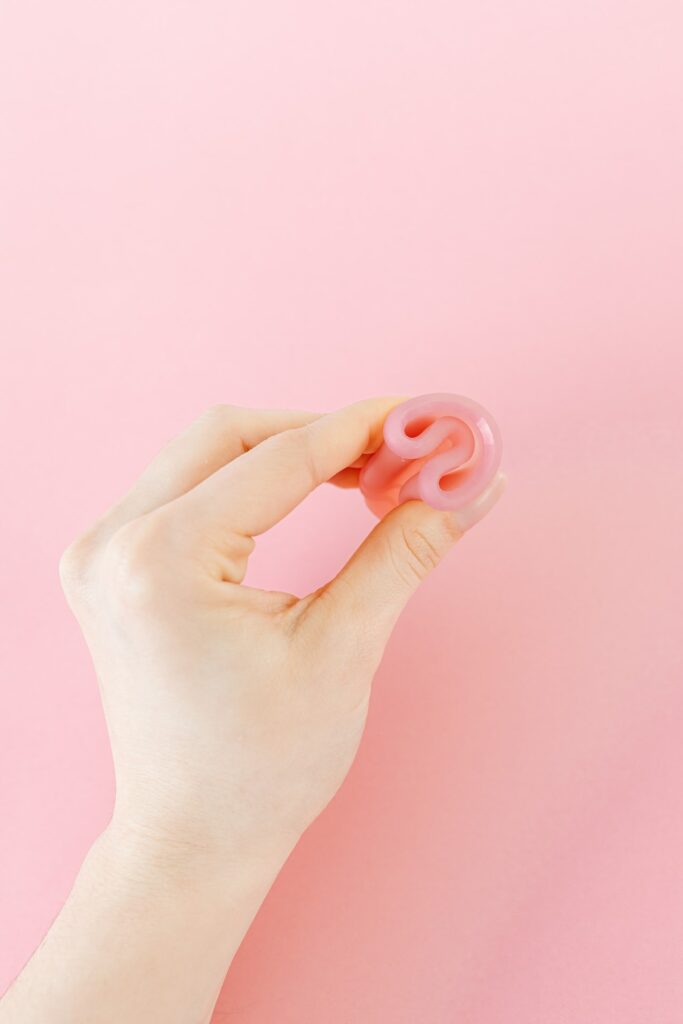
Making the best decision for you
Whether you’ve always been environmentally savvy or you are new to planet-friendly living, your choice of menstrual products can make a huge difference. Throwing hundreds of products onto the waste pile every year is not responsible. Even if you find it too hard to go totally tampon-free, using fewer of them by switching to a menstrual cup at weekends is helpful.
If you made the switch years ago, but are not sure if you can still use a menstrual cup postpartum, don’t worry. Give it a try without too much pressure. If you can – yippee – but if it’s too much of a struggle, look for something else. Reusable pads or period panties are out there too. Chuck them in the wash, not in the trash, and they will help you on your way to a zero-waste life.
